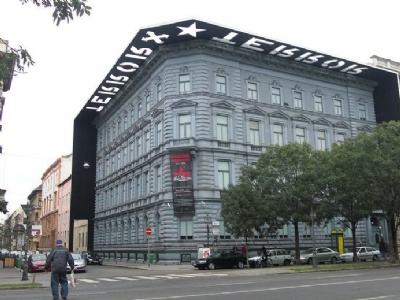Terror Háza
With german support, the hungarian fascist Arrow Cross Party was installed as ruling party in Hungary, October 1944. Its leader, Ferenc Szalas, assured the germans that everything he did was in line with german politics. With the Arrow Cross Party in office, not only Jews were targeted, but also other opponents. The Arrow Cross Party set up headquarters on Andrassy 60 (Terror Haza) in central Budapest. In the building’s basement a prison was installed where political opponents were beaten and murdered. When Hungary and Budapest were liberated by Soviet troops in February 1945, Hungarian communists took over the headquarters and installed their own political police (PRO, aka AVO and AVH) with the mission of persecuting politically opponents. The leader of all three police authorities was the former tailor apprentice, Peter Gabor, who as chief became master of life and death in Communist Hungary.
The interrogations of suspects could last from single days to several weeks before most of them broke down and signed confessions to avoid further torture. Some were sentenced to hard labor and sent to GULAG camp while others were sentenced to death. Those sentenced to death were executed at another prison in Budapest called the small prison (13 Kozma Utca). But despite his communist convictions, Gabor was a Jew and therefore fell victim to Stalin’s Jewish persecution in 1953 and was arrested. During communism, the political police grew stronger and therefore the headquarters constantly expanded and included several other buildings around Andrassy 60. By 1956, the organization had grown so large that it had to leave Andrassy 60. Several of the original rooms were then rebuilt and the prison cells were destroyed.
Current status: Preserved with museum (2010).
Address: Andrássy út 60, 1062 Budapest.
Get there: Metro och tram to Oktogon station/stop.
Follow up in books: Andrew, Christopher: The KGB (1990).




The museum opened in 2002 and its focus is on the communist occupation. The prison cells have been reconstructed and there are also several exhibitions and monuments dedicated to the Hungarian revolution of 1956. In the small prison there is also a small museum that can be visited. Ferenc Szalasi was arrested after the war by American troops but was extradited to Hungary where he was tried, sentenced to death and hanged in Budapest in march 1946. After Peter Gabor’s dismissal in 1953, he became a powerless person, he died 1993.